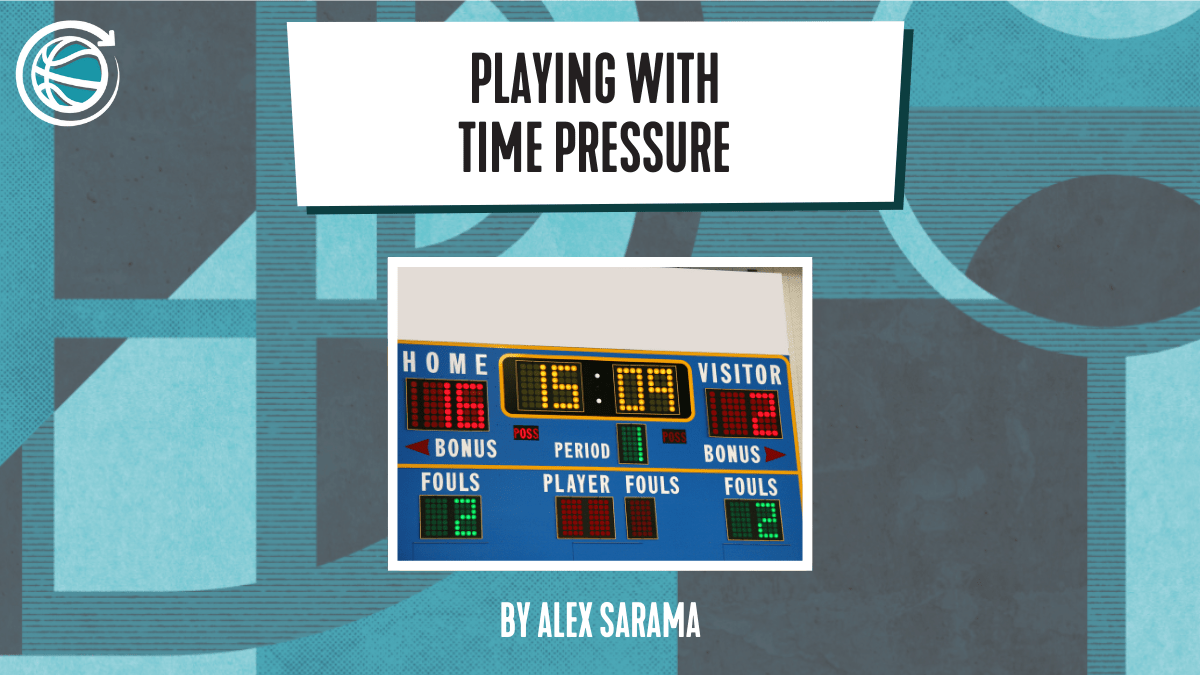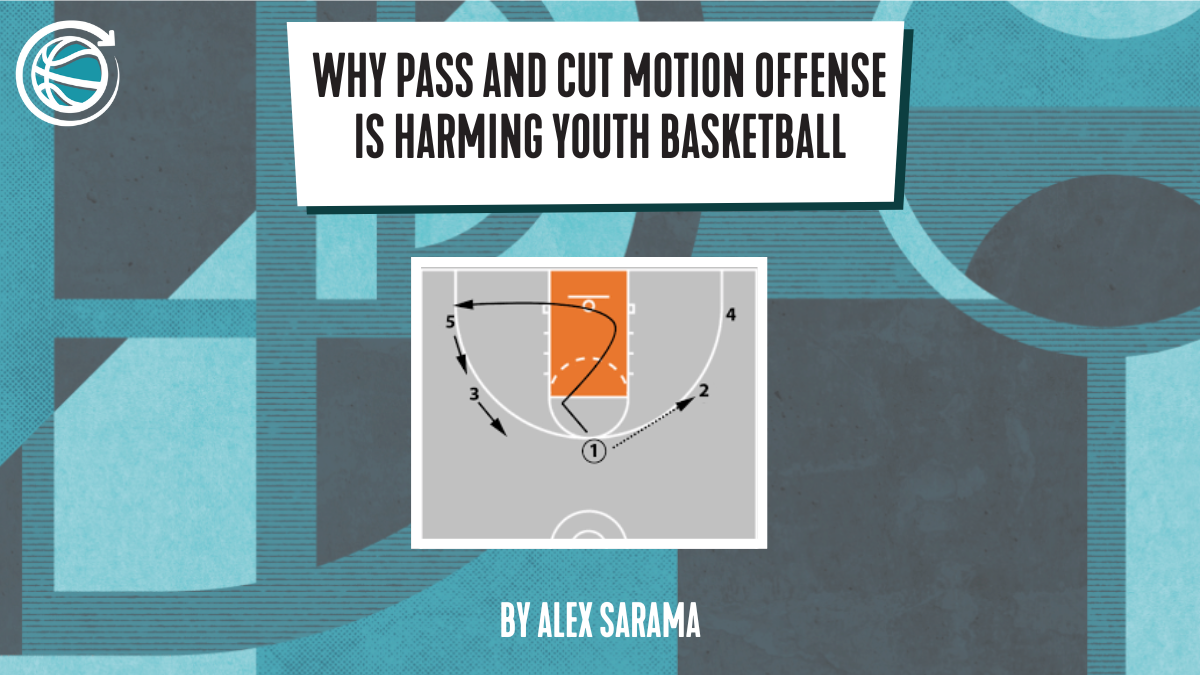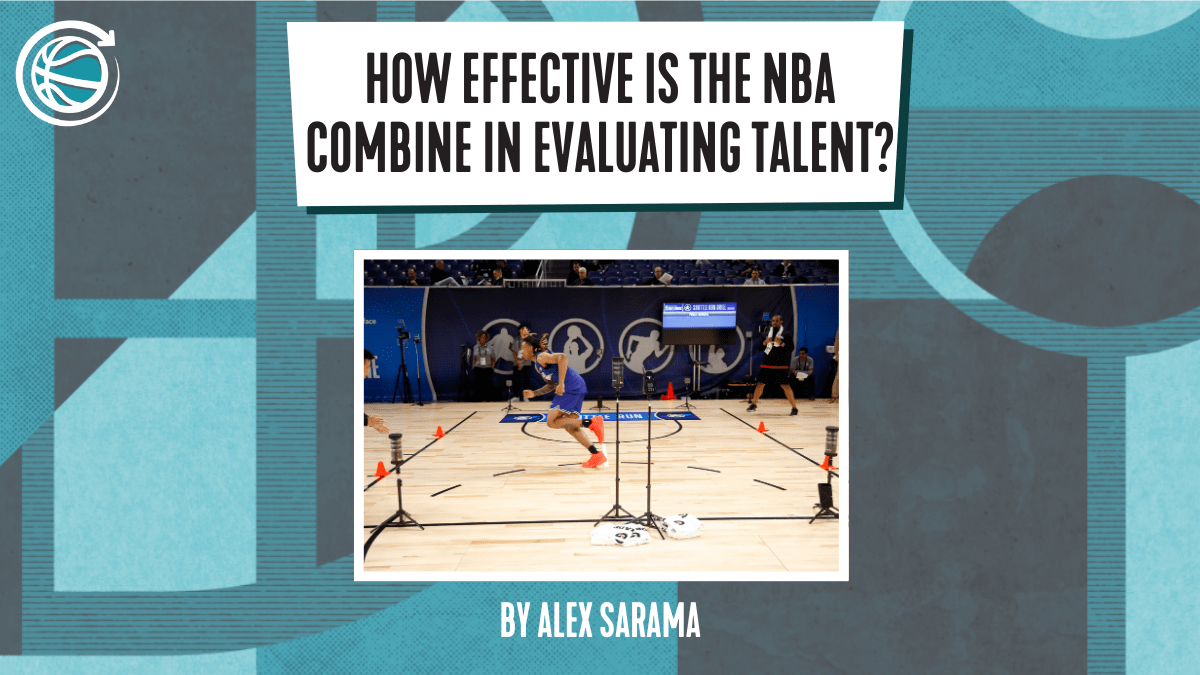How to Use Constraints in Basketball: Playing with Time Pressure
We often get asked about our most frequented task constraints. This is a difficult question, because we don’t really have many. This is because everything we do is in response to what is happening with our players. It is therefore not an instance of “copy paste”, and we do not feel comfortable recommending constraints that everyone should use identically because the idea is for coaches to come up with constraints by thinking deeply about their team and individual players.
With that said, upon reflection, there were some similarities of how we use task constraints within practices:
- How we decisively shape the intentions of the activity
- How we manipulate starting positions
- How we make use of score, time and space
Time will be the main focus of this article. We believe that playing small-sided games with an element of time pressure is absolutely critical to ensure that the offensive and defensive behaviours are more representative. Over the years, we have seen many vague and generic small-sided games that offer little learning benefit. One of the biggest contributions to this is the lack of a time pressure, meaning that offensive and defensive players are not decisive enough in attempting to score and secure a stop.
Therefore, the easiest solution we advocate for is a random clock. Within any activity, subject to the context, players may encounter a ‘random clock’. This could be anywhere from 2 – 15 seconds. This is typically called out by an assistant coach or substitute player. Watch the video below for an example:
⏰Playing SSG’s with time is critical as it ensures that the offensive and defensive behaviours are more representative.
👉In SSG’s without a clock, players may lack intent to score and be aggressive on defense.
💡I like using a “random clock” as shown here. pic.twitter.com/UNWqIv3gZq— Alex Sarama (@AlexJSarama) April 3, 2023
The concept of the random clock is really simple. As the activity starts, the ‘timekeeper’ counts down from any number. Immediately, you will notice how this leads to an enormous difference in the offensive and defensive behaviours that emerge! This concept can be applied to anything: from 1-on-1 to 5-on-5.
In many activities, it is common practice for a possession to take a long time, before the coach starts randomly calling out a random number to try and simulate the shot clock! With this approach, we try and avoid such occurrences to ensure that every single possession is intentional and more representative. If you are lucky enough to have a shot clock as a youth coach, one of the best things you can do is practice with it consistently during the practice. If it is a clock with an option to change times every rep, then this offers some extreme benefits.
DOWNLOAD OUR FREE VIDEO: A GUIDE TO UNDERSTANDING ADVANTAGE BASKETBALL
By playing with less time, it allows for offensive players to be more decisive acting on affordances to create advantages. When players don’t have this pressure, they may be contempt to simply pass the ball or run actions without trying to score. In a good offense, players need to look for advantages at every single opportunity. Running actions without looking to score just wastes time! On the defensive side, players know that if they guard back-to-back triggers, then the possession is likely over. This heavily incentivises them to commit to their defensive coverages in an attempt to neutralise the offense, limiting advantage-creating opportunities.
The key concept when using a random clock is that the players should not know what time they have to play with. This should be a surprise, forcing them to adapt on each offense and defensive possession accordingly. Less time will obviously lead to more desperation. The offense may look for any opportunity to create time and space for their shot, while the defense may get closer into the offense while attempting to avoid the risk of fouling. Rebounding solutions are also heavily affected.
A random clock can be paired with stretches of the practice where a “stable clock” is used. In such activities, the time does not change, and players know that the time will be consistent throughout the activity. Changing the time on the shot clock is just one of numerous examples of how we can manipulate task constraints within a CLA approach to basketball coaching.

Sep 23, 2024
Alex Sarama



